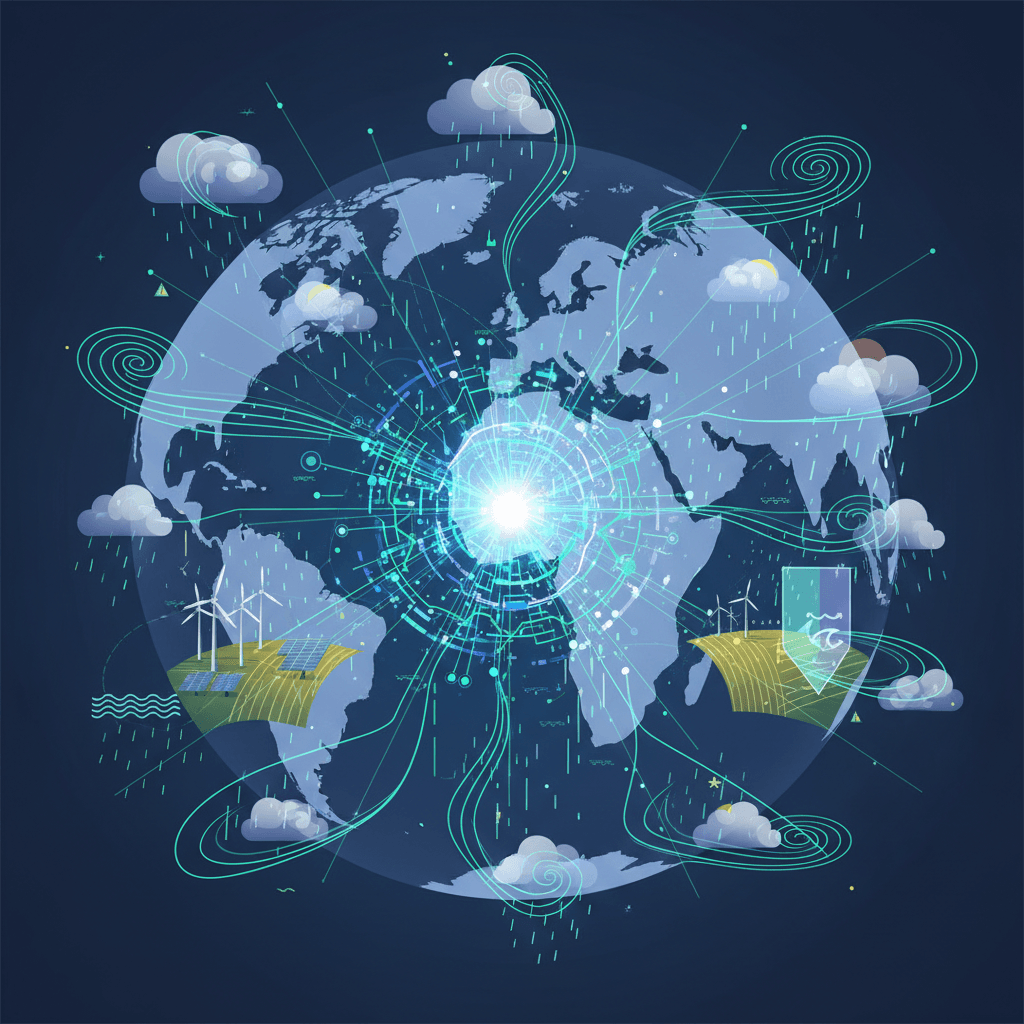Google Deepmind's WeatherNext 2 AI Revolutionizes Global Weather Forecasting
Harnessing a novel AI network, WeatherNext 2 generates hundreds of weather scenarios in under a minute for unprecedented speed and precision.
November 17, 2025

Google Deepmind has unveiled WeatherNext 2, a significant upgrade to its artificial intelligence-powered weather forecasting model that promises substantial improvements in speed, accuracy, and detail. The company asserts that this new generation of weather AI outperforms its predecessor in 99.9 percent of all meteorological variables and forecast ranges, a claim that could have profound implications for industries reliant on precise weather prediction and for the broader field of artificial intelligence.[1] This development marks another step away from traditional, computationally intensive forecasting methods and toward a new era of faster, more accessible, and highly detailed weather intelligence.
At the heart of WeatherNext 2's advancements is a novel AI modeling approach called a Functional Generative Network (FGN).[2][3][4][5] This technique allows the model to generate hundreds of possible weather scenarios from a single starting point in under a minute, a task that would typically take hours on conventional supercomputers.[2][6][7][8] The FGN works by injecting "noise" directly into the model's architecture, which enables the creation of a multitude of physically realistic and interconnected forecasts.[3][8][5] This method is particularly adept at predicting both individual weather elements, what meteorologists call "marginals" like temperature at a specific location, and complex, interconnected systems or "joints," such as large regions affected by extreme heat.[9] The model is eight times faster than the previous version and can produce forecasts with a resolution of up to one hour.[2][6][7] This leap in performance is not just an incremental improvement; it represents a fundamental shift in the ability to rapidly assess a wide range of potential weather outcomes, including low-probability but catastrophic events.[9][10][11]
The implications of such a powerful and efficient forecasting tool are far-reaching, extending into critical sectors of the global economy. In agriculture, more accurate and longer-range forecasts can help farmers optimize planting and harvesting schedules, manage irrigation more effectively, and prepare for extreme weather events that could threaten crops.[2][3][12][13] For the renewable energy sector, which is highly dependent on weather conditions, precise predictions of wind speed and solar irradiance are crucial for optimizing power generation and ensuring grid stability.[9][14][15][10] AI-powered forecasts can lead to more reliable energy output from wind and solar farms, reducing reliance on fossil fuels and facilitating a smoother transition to green energy.[9][15][10] Furthermore, in the face of increasingly frequent and severe weather events due to climate change, the ability of WeatherNext 2 to quickly generate multiple scenarios can be a game-changer for disaster management and emergency response, allowing for better preparedness and potentially saving lives.[6][7][16][17]
The introduction of WeatherNext 2 also highlights the growing ascendancy of AI in a field historically dominated by traditional numerical weather prediction (NWP) models. NWP models rely on complex physical equations and immense computational power, often requiring supercomputers for hours to generate a single forecast.[6][18][19] While highly effective, their computational cost and time have been significant barriers. AI models like WeatherNext 2, trained on decades of historical weather data, offer a more efficient alternative, capable of producing forecasts in minutes on a single TPU.[6][3] However, it's important to note that AI models are not without their limitations. They are heavily dependent on the quality and completeness of the historical data they are trained on, and may struggle to predict rare or unprecedented extreme weather events not well-represented in the training data.[18] Some experts also point out that AI models can sometimes produce "overly smooth" forecasts that may miss localized extreme events.[20] Therefore, the future of weather forecasting may lie in a hybrid approach, combining the strengths of both AI and NWP models.
Recognizing the broad potential of its new technology, Google is making WeatherNext 2 accessible to a wide range of users. The model is already being integrated into Google's consumer products, including Search, Gemini, and Pixel Weather, with plans for inclusion in Google Maps.[9][3][7] For businesses, developers, and researchers, the forecast data is available through Google Cloud's Vertex AI, BigQuery, and Earth Engine platforms.[9][2][3][7][8] This move aims to democratize access to high-level weather forecasting capabilities that were once the exclusive domain of large meteorological institutions.[7] By providing this data, Google is positioning itself as a central player in the infrastructure of climate and weather-related decision-making. The availability of this data allows for further research and the development of customized applications tailored to specific industry needs, from optimizing shipping routes to managing supply chains with greater precision.[7]
In conclusion, the launch of Google Deepmind's WeatherNext 2 represents a pivotal moment in the evolution of weather forecasting. Its significant advancements in speed, probabilistic forecasting, and accuracy, all driven by the innovative Functional Generative Network, are set to redefine what is possible in meteorology. The widespread integration of this technology into consumer products and its availability to the broader scientific and business communities signal a new era of data-driven weather intelligence. While challenges and limitations remain for AI in this field, WeatherNext 2 demonstrates the immense potential of artificial intelligence to not only improve our daily lives but also to help address some of the most pressing challenges of our time, from food and energy security to climate change adaptation and disaster preparedness.
Sources
[2]
[3]
[4]
[6]
[7]
[8]
[11]
[12]
[13]
[15]
[17]
[20]